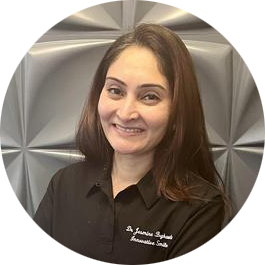PLAQUE: WHAT IS IT AND WHAT ARE MY TREATMENT OPTIONS?
PLAQUE CAN BE DIFFICULT TO DETECT
Plaque not only consists of food and bacteria, but saliva, and thrives on carbohydrates, especially simple carbs like sugar, refined grains, and white pasta, which create an acid that eats away at the enamel surface of teeth, leading to cavities. Plaque is soft and sticks to teeth and under the gums. Unless it is cleaned off within two days, it will harden into tartar, which can only be removed by a dental hygienist.
Plaque and tartar can lead to gum disease, the first stage of which is known as gingivitis, when normal brushing can cause gums to bleed. Advanced gum disease is called periodontitis and unless stopped, the gums pull away from the teeth they support and the teeth become loose, falling out or needing to be extracted. Some 80% of Americans suffer from periodontal disease.
LOOSENED TEETH MAY NEED TO BE EXTRACTED
But that is not the end of the damage that plaque ultimately leads to. The mouth has a natural tendency to have the teeth lean in to “fill the gap” where the missing one was. They then become loose themselves and then other teeth become misaligned. If enough fall out or need to be extracted, you will need to have them replaced with dental implants (the only solution that can be a permanent solution, since they stop further misalignment and the erosion of the jawbone; dentures need to be refitted about every five years because of this gradual change).
BRUSHING AND CLEANING IS IMPORTANT
Aside from eating healthier foods, the best prevention from plaque forming is brushing for two minutes after breakfast, which also removes the bacteria that accumulate in the mouth overnight. Then for two minutes, along with flossing, after the last snack of the evening.
It is also essential that you have a professional cleaning by your hygienist at least twice a year. She has the tools and techniques to reach the hard-to-clean areas and anti-bacterial solutions she can inject into the gums to stop periodontal infections. Hygienists can also do a deep cleaning that gets under the gum line. Those with persistent gum infection may need to add to their oral health routine a dentist-grade mouthwash, a Waterpik, an electric toothbrush, or small bristle brushes to get into the tight gaps between teeth.
If you have not had a professional cleaning recently, call now in Long Beach today to set an appointment.
COMPLIMENTARY CONSULTATION
If you are ready to experience the difference from our dental practice, call to schedule an appointment today. Our skilled team is eager to craft the smile of your dreams.

